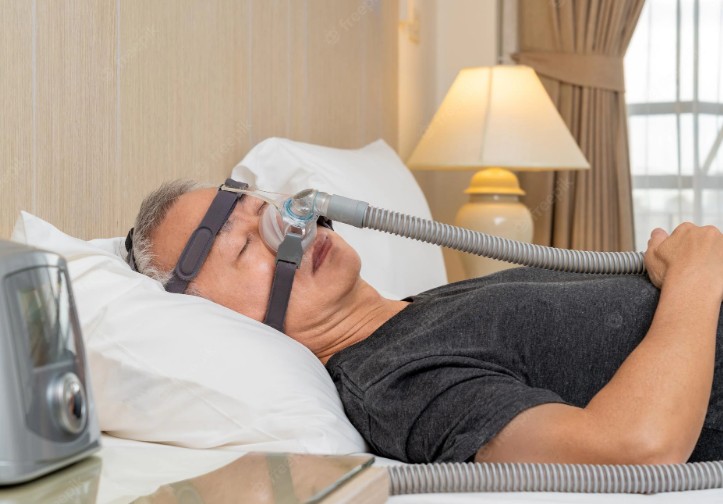You likely already know that your CPAP mask, cushions, and tubing need to be changed every three months, but you might be unsure of how frequently your CPAP machine needs to be changed. To learn more about the CPAP machine’s lifespan, read the following guide.
Depending on the particular piece of equipment, a CPAP machine’s lifespan varies. CPAP machines are typically used for between three and five years. However, CPAP masks need to be changed frequently throughout the year.
When to Replace Your CPAP Machine
The lifespan of a CPAP machine varies depending on the brand and model, but generally speaking, most CPAP machines last between three and five years before needing to be replaced.
One new CPAP machine is typically covered by most health insurance plans, including Medicare, as part of the three to five-year replacement cycle. To ensure consistent, dependable sleep therapy every night, it is advised to purchase a new CPAP machine when you are eligible for one even if it appears to be functioning well.
You might be able to replace the unit sooner if you’re willing to pay out of pocket or switch insurance companies. Your CPAP machine’s repair or replacement may be covered by the manufacturer’s warranty if problems arise within the first two to three years of use.
Why is Replacement Important?
Having fully functional equipment is crucial. The term “continuous positive airway pressure,” or CPAP, is probably already familiar to you. Therefore, you are not actually treating your sleep apnea if that positive air pressure is not keeping your airflow properly maintained.
You will have to start over and deal with the same symptoms and risks associated with untreated sleep apnea if your CPAP device is not operating at its best. You’ll also be more vulnerable to respiratory infections, though.
It makes sense to maximize the benefits of your sleep apnea treatment and the money you spend on it because both time and financial commitments are involved. The good news is that you can update your setup as product development continues. Like smartphones and computers, newer devices are getting smaller, more effective, and more attractive. Many modern machines also have updated features that may be harmful to your health.
Potential benefits of replacement include:
- Quieter motors as technology improves over time
- Integrated humidification is becoming more and more common
- More sleep data that is also more easily accessed
- Improved comfort features as patients and sleep specialists give more input to designers and manufacturers
- AHI monitoring to help you be more aware of how your treatment is progressing
- Auto-adjusting pressure so that it’s easier to sleep through the pressurized air treatments

Why You Should Routinely Replace Your CPAP Machine
Even with a strict cleaning schedule, older machines can still result in respiratory or sinus infections and other illnesses from built-up contamination. Consistent use of your CPAP machine contributes to the general deterioration of performance over time, like most everyday items. It’s crucial to regularly replace it to guarantee your sleep apnea therapy is always effective.
New technological developments, which can greatly enhance your experience with sleep therapy and support your continued health, are one of the main reasons to replace your CPAP machine. While it’s important to replace your CPAP machine on schedule, doing so also gives you the chance to try out fresh comfort features and cutting-edge technological capabilities. Some of our favorite new CPAP machine features are:
- Quick, convenient sleep stats: When you wake up each morning, you can view a summary of the previous night’s sleep on some CPAP machines that have wireless connectivity. This feature sends your sleep data directly to your healthcare team.
- Quieter–performing accessories: You and your partner can both sleep more peacefully thanks to recent advancements made to masks and motors, such as the inclusion of diffusers and multi-directional openings.
- Improved humidification: New integrated humidifiers are lighter and more portable than ever before. They also take up less space, are simpler to fill and clean, and may have better heated tubing that prevents condensation in the tube.
Speak to your doctor about your options before replacing your CPAP machine. Together, you and your doctor can choose a CPAP machine that your doctor believes will be helpful for you in order to create a nearly-custom setup for your sleep therapy that is reliable and effective.
What to Do With Your Old CPAP Machine
Your old CPAP machine can be sold to a licensed reseller to help you recoup some of your investment once you’ve upgraded or replaced it, or you can donate any CPAP equipment to the American Sleep Apnea Association or other participating charities.
The CPAP machine needs to be under six years old to be donated. Your old CPAP machine can be recycled if your neighborhood recycling facility approves if there aren’t any donation opportunities where you live. You should be aware that some recycling facilities charge a fee to recycle specific items.
When you notice that your CPAP machine isn’t performing as well as it once did or when some of its features stop working, it’s probably time to replace it. But a good rule of thumb is to replace or upgrade your CPAP machine every three to five years in accordance with the manufacturer’s replacement schedule.
Should You Fix Or Replace Your CPAP Machine?
You can determine whether it makes more sense to repair a problem with your CPAP machine or completely replace it by troubleshooting CPAP machine issues with professional advice from Aeroflow.
Numerous problems aren’t caused by the machine itself. Often, the issue is caused by nearby CPAP supplies and can be solved for a much lower cost. Here are some recommendations we have seen that can have a significant impact without costing a fortune!
- Check the fit of your CPAP mask to make sure you still have a good seal
- Adjust headgear until you find what works best for you – some people may do better with a full face mask than a nasal pillow
- Replace CPAP filters to maintain proper airflow and avoid respiratory infection
- Check your hose connections to be sure you’re not losing air pressure
- Check the humidifier to be make sure it’s running properly
- Switch to side sleeping as an additional form of sleep therapy that uses gravity to your advantage
- Use a chin strap if your find yourself mouth breathing during treatment
- Talk to your doctor about adjusting the pressure settings – please never change them yourself!
Your CPAP Machine Warranty
It’s best to keep in mind when it comes to CPAP machines that the manufacturer’s warranty (which most typically ranges between two and five years) is only one indication of the machine’s actual lifespan. The average equipment vendor will tell you that a CPAP machine has a lifespan of five years or less. Even so, a high-quality machine that is cleaned and well-maintained can last up to seven years, if not a little longer.
When to Upgrade Your CPAP Machine
In general, you should replace a machine before it reaches the end of its useful life because a calculation error could result in a noncompliance. The lifespan of CPAP devices has increased as a result of several hardware and technological advancements in recent years. Machines may also appear “old” because they do not have the latest comfort innovations such as heated humidifiers, and an improved user interface that simplifies operation on every level.
The Bluetooth connectivity of many modern devices also enables you to store data on your sleep patterns and even send it to your doctor. The Philips Respironics DreamStation Go and other new travel CPAP machines have apps like DreamMapper that can provide information about sleep apnea and educational materials for sleep therapy.
FAQs
Do I Need a New Sleep Study to Get a New CPAP Machine
It is not entirely necessary to complete a sleep study in order to purchase a CPAP machine. We do, however, advise having a sleep study done because it would provide a thorough understanding of your sleep habits and issues.
How Many Hours Per Night Should I Use My CPAP Machine
Medicare and private insurance companies require patients to use their CPAP very consistently — often at least four hours every night and for 70% of nights each month.
How Long Does a CPAP Machine Take to Work
Studies have looked at how CPAP therapy gradually gets rid of the fatigue and daytime drowsiness brought on by obstructive sleep apnea. The research revealed that patients started to achieve optimum results after about two weeks of using their CPAP machine.
ResMed AirSense 10 Lifespan Hours
They are designed for 20k hours or 7yrs.
How Often Will Insurance Pay for a New CPAP Machine
The actual CPAP device should be replaced every 3 to 7 years due to its frequent use. Many insurance companies will cover a new device every three to five years. Prior to your insurance provider approving the new device, you might also require a fresh sleep study.
How Often Can I Get a New CPAP Machine on Medicare
Medicare will usually cover the cost of a new CPAP machine every five years. If you had a machine before enrolling in Medicare, Medicare may cover some of the costs for a replacement CPAP machine rental and accessories if you meet certain requirements
When Will CPAP Machines Be Available Again
Because of the Philips recall, pandemic-era supply chain disruptions, and shortage of semiconductor chips, it’s likely we will continue to see a low supply of CPAP devices in the first half of 2023.











